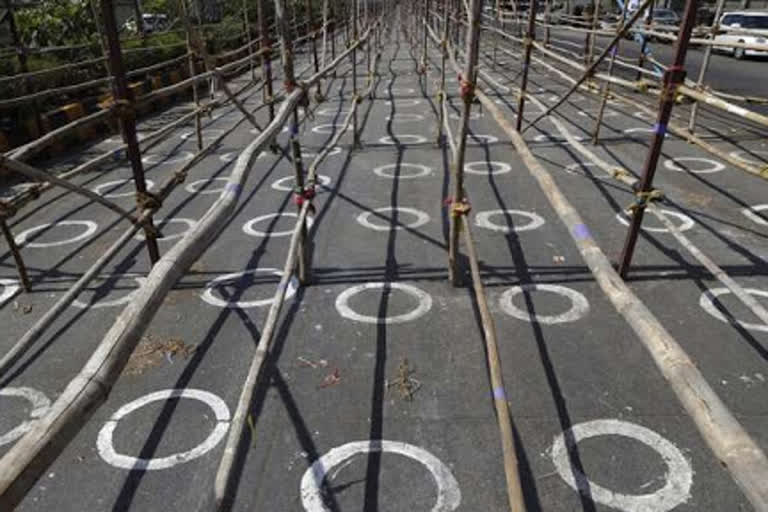Hyderabad: India entered into the fourth phase of lockdown from May 18 which has a different set of rules and guidelines as issued by the Home Ministry on Sunday.
The 54-day curfew in India, owing to the rising number of coronavirus cases across the country, was first imposed for 21 days starting March 25 and then extended from April 15 and May 4.
Let us look at the lockdown chronology and understand how every lockdown was different from the previous one:
It all started from one-day Janata Curfew on March 21 when there were 236 COVID-19 cases in the country. On March 24, when the cases increased to 471, Prime minister Narendra Modi announced lockdown 1.0 of 21 days. During this period several monetary schemes and financial help was declared by the centre-
- 80 crore poor people will receive 5 kg wheat or rice and 1 kg of preferred pulses for free every month for the next three months. Free grains can be availed of in two installments.
- Insurance cover of Rs 50 lakh per person for doctors and medical workers fighting COVID-19.
- Increase in MNREGA wage to Rs 202 a day from Rs 182 for 13.62 crore families.
- 20.4 crore Jan Dhan women account holders to get Rs 500 per month for next three months.
- Bank account holders would not be charged extra for using a debit card to withdraw money from the ATMs of other banks for the next three months, and charges for not meeting minimum balance requirements would also be waived.
- Ex-gratia of Rs 1000 to 3 crore senior citizens, disabled and widows among the poor.
- Government to front-load Rs 2000 to 8.7 crore farmers in the first week of April under the existing PM Kisan Yojana.
- Below the poverty line families to receive free cylinders for the next three months.
- Wage-earners below Rs 15,000 per month in businesses having less than 100 workers to receive 24% of their monthly wages into their PF accounts for the next three months.
To scale up measures to combat the deadly virus 40,000 ventilators were brought by the Home Ministry. 'Arogya Setu' app was launched by the Union Health Ministry on April 2, to help users identify whether they are at risk of COVID-19 infection or not. The government allotted ₹ 15,000 crores for the purchase of personal protection equipment for healthcare workers, setting up testing laboratories and quarantine centres. The Union Cabinet approved a 30% cut in the salaries of all Members of Parliament and a two-year suspension of the MP Local Area Development (MPLAD) scheme so that the amount saved can go to the Consolidated Fund of India to fight COVID-19.
On April 15 when the total number of active cases rose to 10363, Modi extended the lockdown till May 3 with more restrictions in the hotspot areas.
During lockdown 2.0, India got 15 million PPE kits from China. ICMR suggested testing of pooled samples, thereby aiming to increase the number of tests conducted by laboratories.
Wearing masks in public places was made compulsory and spitting was made an offence. Industries operating in rural areas reopened on April 20.
Permission for several activities and services like agriculture, horticulture, Postal service, banking etc were given.
Kisan Rath mobile application was launched to ease the agricultural supply chains, especially for perishable produce.
RBI to pump in ₹1 lakh crore. Liquidity infusion of ₹1 lakh crore was announced by the RBI, of which ₹50,000 crore was exclusively for non-banking finance companies (NBFCs).
E-commerce firms were instructed to not supply non-essential goods.
Union Health Minister Harsh Vardhan launched the ‘COVID India Seva’, an interactive platform to establish a direct channel of communication during the pandemic.
More than a month after the countrywide lockdown, the Ministry of Home Affairs issued guidelines to allow inter-state movement.
With as many as 49,391 cases and 1694 deaths, on May 1, the lockdown entered phase three which lasted till May 17.
The Union Health Ministry listed 130 districts in the country in the red zone, 284 in the orange zone and 319 in the green zone.
Railways started operating ‘Shramik Specials’ to ferry stranded migrant workers, tourists, pilgrims and students back to their home states.
The Indian Council of Medical Research (ICMR) announced that it is all set to start a study in about 75 districts of the country that have the maximum number of COVID-19 cases to check whether community transmission in India has started or not.
ALSO READ:India's tally climbs to 96169 with spike of 5242 cases in a day
